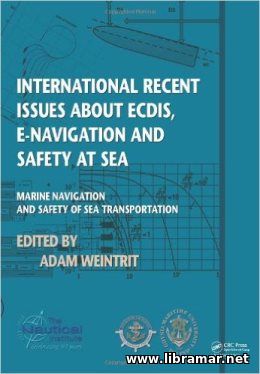 This nice volume by Adam Weintrit, is aimed to provide a good comprehensive overview of all recent international developments covering the EC, i.e. electronic charts, electronic navigation techniques plus safety at sea - it is addressed in the first turn, to the maritime specialists and scientists directly involved in the scientific research/development activities in navigation and safe marine transportation.
Among the topics covered within this title we would note the concept of electronic marine navigation and ECDIS, including developing the requirements that would be governing the management of communications within the frames of the electronic navigation concept, advance maritime technologies, future trends and assessing the navigation safety, brief technical overview of the newly introduced electronic chart products, visualization, presentation of the relevant navigational info, systems of data transmission/communication, marine CNS, security modeling technique and development of the 3D systems of cartographic visualization, safety at sea, safety controls and also emergency supply systems, and other interesting topics. Have a look inside to be updated with all recent happenings.
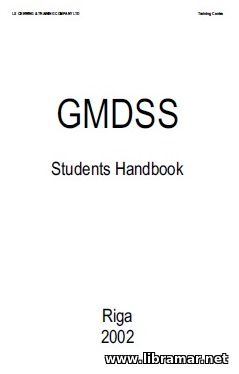 The process of GMDSS development has been originally initiated by IMO some ten plus years back. The reasons for developing subject system included the existing inadequacy of the distress and safety systems, and utilization of the relatively outdated systems. The main objective of this book was to provide the shipping industry with the clear theoretical description of the fundamental features of the MMS and MMSS and also to made the content complying with the requirements contained in the exam syllabus for GOC, providing detailed technical overview of the professional skills to be attained by the students passing the GMDSS/GOC course.
The publication is providing a good introduction to the individual system utilized on board ships equipped as per the GMDSS requirements. It is also seeking to point out the critical importance of proper understanding of the possibilities and also limitations of the various systems related to the coverage and range. Using this volume in combination with the ITU publications and equipment manuals will definitely enable the readers to deal with the majority of the practical problems arising during the course. The content is intended to all readers having the interest in the field of the marcom, including radio officers and navigators, GMDSS instructors, and others. It can also serve as a good teaching aid in academies and training centers.
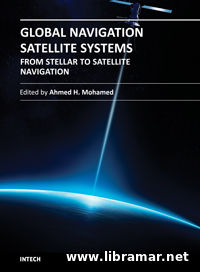 This is a really excellent and useful publication dedicated to the GNSS and covering the whole period from their invention till today, including the very latest equipment. The content of the book is arranged in two big parts. The first part consisting of four chapters provides the fundamental technical information about these systems and it opens with the chapter relativity laws for the rates variation and GPS positioning errors that are commonly caused by the space weather effects; this one is followed by the chapter addressing the receiver biases in GP satellite ranging and standalone sat-based global positioning.
The last chapter of this pat of the book is covering the ambiguity false fixing. The second major part of the volume is dealing with the practical applications of GNSS. Here the author describe the L! global positioning system used as a monitoring tool and intelligent traffic system. Needless to say that the book will be greatly appreciated with all technical personnel somehow involved in operation, maintenance and repair of such systems and will provide them will all info they need to perform their activities. Moreover, it can be used by the students whose specialties are connected with satellite systems.
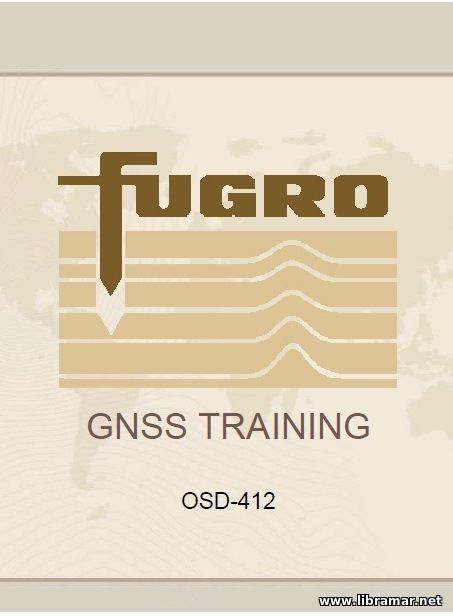 This publication provides the content of the official GNSS training developed and released by Fugro. The Starfix Suite had its beginnings about 1997 with its concepts as a highly modular set of Microsoft windows applications all talking together via Message Manager, and synchronized via the Time subsystem. Once the basic backbone and basic modules were in place, it became much faster to bring new applications online, for much of the functionality such as interfacing, displays, logging, time series plotting etc was already written and proven.
Two navigation modules were written due to fundamentally differing requirements. Starfix Nav was written and supported by John Chance as a navigation engine sitting on top of their Gulf of Mexico database - this is what was required for their operations. In Perth Australia, the DOS based PCNav/PCBarge which were in wide use around the Fugro companies was replaced by Starfix Seis - basically a classic line running type application. Adherence to Starfix Suite Compliance - a set of rules etc on how Starfix Suite applications talk to each other - by the software developers also then determined how well all the other applications could be used by either Nav or Seis.
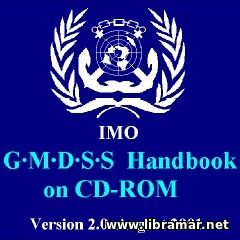 The original intention of this Handbook is to provide the mariners and radio specialists with a single comprehensive book explaining all fundamental technical principles of the GMDSS, together with the applicable radio communication requirements and also the recommendations for the implementation of the subject systems, recognized standards of the operational performance of GMDSS, technical specifications that should be met by the equipment, methods of and also the procedures for operating the various radio services forming the GMDSS system.
The main content of the volume is divided into eight major parts, starting with the introductory one, which is then followed by the description of the basic technical concepts of the GMDSS and communication systems. The following chapters are dedicated to the operational procedures and Master Plan, operation/communication network of the shore-based SAR, i.e. "search-and-rescue", plus the maintenance of all associated radio equipment.
The annexes will provide some additional information, e.g. the SOLAS amendments, MSI, circulars, system data, relevant articles and appendices, IMO Resolutions, and other technical and regulatory information that will be useful for the shipboard radio personnel and other specialists.
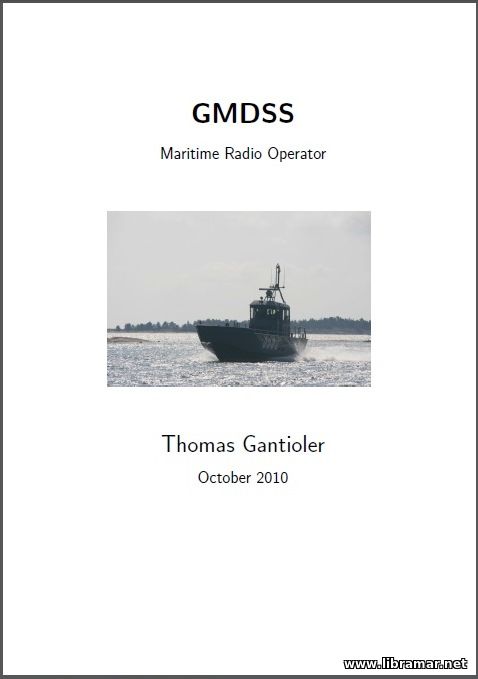 The content of this useful reference publication has been compiled by Thomas Gantioler intending to provide navigators with resource containing the information covering literally all important aspects of the radio equipment used on board ships of today. The volume is mainly expected to be of good assistance to marine radio specialists plus to the ship crew members involved in one way of another in operating any radio equipment installed onboard their ships.
It consists of four chapters supplemented with the Appendix with the first one is solely dedicated to the Short Range Certificates (SRC) and includes five parts - GMDSS overview, VHF Maritime Mobile Radio, EPIRB, SART and NAVTEX. The other three parts are dealing with the ROC, standing for the "Restricted Operator Certificate", GOC, i.e. "General Operator Certificate", and, finally, LRC, standing for the "Long Range Certificate".
Several appendices will provide navigators with some additional supplementary information on the OPT, i.e. Operation Performance Testing of the radio equipment, mock questions about radio regulations and SOLAS, translations of the radio messages. glossary of the terminology and abbreviations, identifications, list of maritime radio equipment etc.
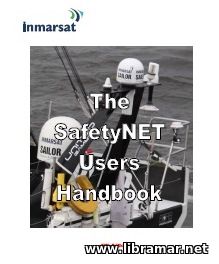 The fifth edition of the Handbook intended for the navigators, to explain them the principle of operation of the International SafetyNet service being one of the elements of the IMO GMDSS. The IV/12.2 regulation of SOLAS declares it mandatory for the seagoing ships to maintain the radio watch to broadcast the MSI, i.e. maritime safety information.
The SafetyNet is used to broadcast and automatically receive the MSI via the EGC system and the receiving capability of the system forms a part of the equipment that the vessels are obliged to carry. The content of this handbook is mainly dealing with the MSI distribution through the satellite by means of the SafetyNet service.
The book starts with the description of the MSI, EGC services, and types of the MSI that can be received, availability of the system in different areas of the world, repeat broadcasts, types of the EGC receivers, reducing the number of alarms, types of the message that must and may be received, missed messages, setting up the EGC receivers, good operating practice, updating the terminal position in manual and automatic modes, and other information. Two appendices contain the contact addresses and the EGC-related revised IMO standards, followed by the numerous figures.
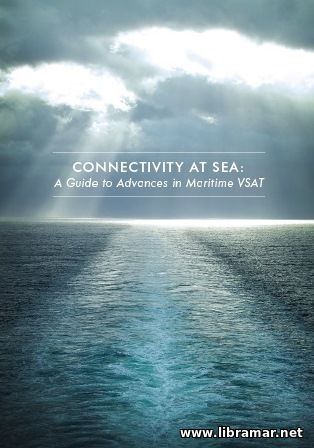 All seafarers are well aware of the importance of quick and appropriate responses to the changing conditions experienced at sea. The maritime operators realize how important it is to adopt subject changes to keep their enterprises competitive. Nowadays, the biggest and most significant change that the maritime industry faces is technology.
In the past it was enough just to have the communication system installed on board the vessel for the occasional calls or electronic mailing plus to use it in the cases of emergency, today having a 24*7 broadband connectivity is considered a real business necessity in order to operate the ships in the efficient and effective manner. Affordable connectivity that links the vessel at sea to the shore is providing the required ability to the leverage of the efficiency of the workforce networked globally.
The huge amount of the information that comes to the mariners today, and particularly to the senior ship officers, is overwhelming. Sometimes the people working on the vessel think that it is not actually required to be fully aware of all that information, however it shall be imperative to know where the subject information can be found in case of necessity. Obviously, the optimal and best way to access this information and process it will be through the fast and reliable connectivity...
|







